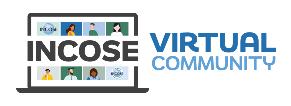
4 minute read
SYSTEMS ENGINEERING RESOURCES
Useful artifacts to improve your SE effectivenessSYSTEMS ENGINEERING RESOURCES Useful artifacts to improve your SE effectiveness
SYSTEMS ENGINEERING RESOURCES
Advertisement
INCOSE Webinar: How to be Successful in the Absence of Requirements
On 20 April, Dr. Ron Carson, INCOSE ESEP, Boeing Technical Fellow and Adjunct Professor of Systems Engineering at multiple universities, delivered an INCOSEsponsored webinar #157 on How to be Successful in the Absence of Requirements. As a member of the INCOSE Requirements and Measurement Working Groups, Dr. Carson has published definitive papers on requirements completeness, structured requirements, requirements verification and validation, and measuring requirements quality.
In this webinar, Dr. Carson defined the problem as: 1. Clients and customers often believe they know the solution they prefer but may not understand the problem they need solved. 2. As a result of problem #1, their requirements may be non-existent, incomplete, or incorrect. 3. Requirements elicitation may be inadequate to realize a correct and complete set of requirements.
As a solution, Dr. Carson shared practical insights concerning how to generate requirements when there aren't any or they are not complete, consistent or correct. Guidance included: 1. Methods for addressing ambiguity 2. Defining good requirements 3. Finding all the requirements 4. Validating requirements
Checklists were provided for engaging clients/ customers and validating requirements.
INCOSE members may download the presentation and access the video through INCOSE Connect.
View additional requirements-related presentations by Dr. Carson here.
OMG BPMN Overview
The Object Management Group (OMG), during its Q1 Technical Meeting in March 2022, hosted a demonstration concerning the current capabilities addressed in the Business Process Model and Notation™ (BPMN) standard. The BPMN™ in Action! presentation was led by Denis Gagne, CEO & CTO of Trisotech. Leading software vendors demonstrated live the iterative elaboration and interchange of a BPMN model using their respective tools that implement the BPMN standard.

View the presentation slides.
Watch the 61-minute webinar. Learn more about BPMN™. View a related Trisotech presentation, Overview of BPMN, CMMN and DMN, that compares BPMN with the related standards, Case Model and Notation (CMMN™) and Decision Model and Notation (DMN™).
PDMA kHUB Portfolio Management Resources
Engineers focused on the development of successful products often lack insight into the role that their organization’s Portfolio Management process plays in shaping the requirements for the solutions that they design.
The Knowledge Hub (kHUB) of the Product Development Management Association (PDMA) maintains a rich set of information resources that address a wide range of product development and innovation topics. Relevant to Portfolio Management, the following kHUB resources may help systems engineers to gain a deeper understanding of this critical upstream process:

• Aligning Product Portfolios with Strategic Plans (Iain King) • A Fresh Look at R&D Decisions: Learning from the Best (Jason LeBoeuf and Marc Drucker) • Integrated Product Portfolio and Project Management: The Art of New Product
Demand Planning (Oliver Wight – White Paper Series) • Portfolio Mixology! How to Manage Successful Portfolios (Mark Bouchea and Corey
Fiedler) • Portfolio Simulation (David Matheson)
Learn more about PDMA. Become a member.
NIST Study on Blockchain and Related Technologies for Manufacturing Supply Chain Traceability
The U.S. National Institute of Standards and Technology (NIST) has published a study that explains how tamper-evident and tamper-resistant information sharing technologies, like blockchain, can help create a supply chain ecosystem that assures traceability of products.
NIST Internal Report 8419, Blockchain and Related Technologies to Support Manufacturing Supply Chain Traceability: Needs and Industry Perspectives is intended help industry protect manufacturing supply chains from disruptions, IP theft and product sabotage. The report provides an overview of manufacturing supply chains – web-like connected sets of manufacturing resources, products, and processes.
To ensure a supply chain's integrity, manufacturing enterprises must track "provenance of products," defined as the chronology of the origin, development, ownership, location, and changes to a system or system component and associated data. Enterprises must also validate – or ensure the "pedigree" –of this supply chain flow.
The 118-page report addresses the data sharing and storage technologies which could be used to meet supply chain traceability requirements. Blockchain, a distributed ledger that stores all network activity, is highlighted because of its ability to create a digital thread for a product, moving through the supply chain. Blockchain’s two-step validation process has promise for ensuring supply chain pedigrees. Once published, blockchain cannot be altered and it becomes an open record that users in a supply chain can access and verify the authenticity of all products' data.
The publication includes a variety of case studies on blockchain and related technologies.
Download the paper here.
INCOSE Systems Exchange Cafés

systems engineering. INCOSE hosts three regularly scheduled Systems Exchange Cafés, informal virtual get-togethers that operate on a “book club” model. Attendees freely discuss a previously agreed topic such as a book chapter, news items or journal article that is relevant to systems and
Systems Exchange Cafés are open to INCOSE members and non-members alike. No recordings are captured or meeting minutes produced to encourage free interchange of ideas. Separate follow-on discussions among attendees are encouraged, perhaps initiated by use of the Zoom chat feature.
Each Café meets every two weeks, with days and times as shown below:
Fir Tree Café: Wednesday 9:00 am Japan. Register Oak Tree Café: Wednesday 8:00 am UK. Register Maple Tree Café: Friday 8:00 am US Pacific. Register
The principles of systems engineering apply almost identically to non-systems. But their importance differs.



